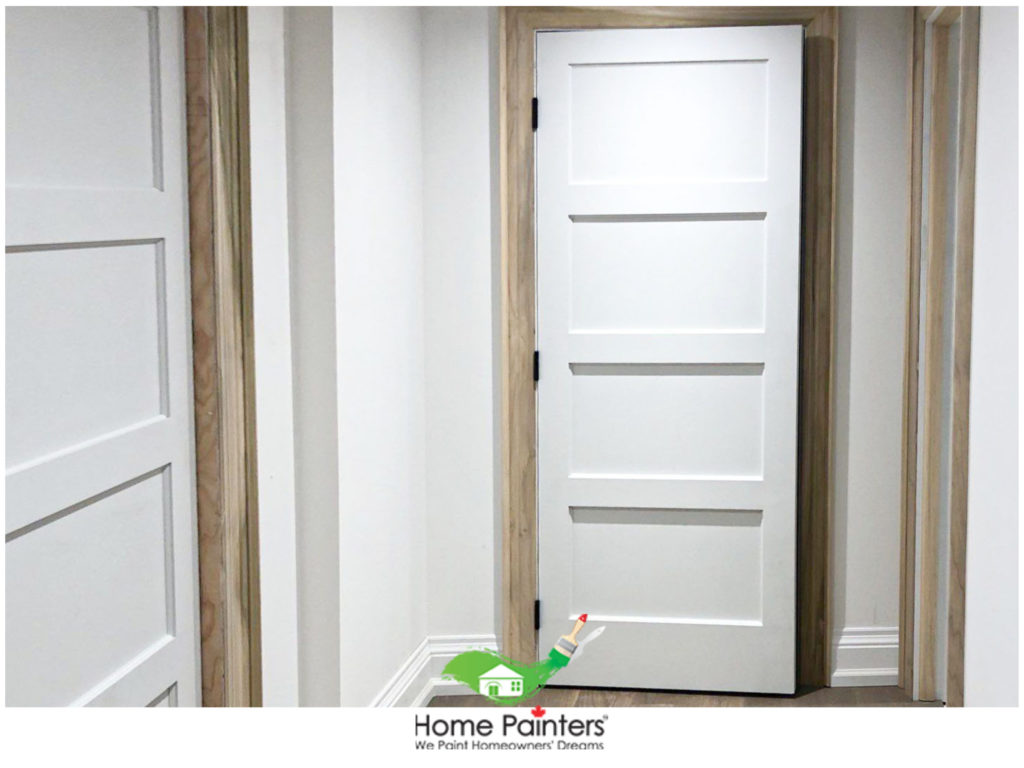In the tapestry of home ownership, our doors stand as silent guardians, welcoming us and keeping the outside world at bay. But for dog owners, these portals can sometimes become battlegrounds, leaving unsightly scars in the form of chewed door frames. If your furry friend’s playful escapades have left your door frames looking worse for wear, fret not. With the right know-how, you can restore their pristine condition and maintain the tranquility of your home. Here’s your comprehensive guide to fixing dog-chewed door frames like a pro:

Image: keepingdog.com
Assessing the Damage: A Reconnaissance Mission
Before embarking on any repairs, it’s crucial to assess the extent of the damage. This will help you determine the best course of action and gather the necessary materials. Examine the chewed areas closely, noting the depth, width, and pattern of the marks.
If the damage is superficial, involving only surface scratches, you may be able to get away with simple touch-ups using wood filler or paint. However, if the chewing has gone deeper, involving splintering or gouging, you may need to replace sections of the trim or frame.
Materials for the Mission: Gathering Your Arsenal
Once you’ve assessed the damage, it’s time to gather your repair arsenal. Here’s a checklist of essential supplies you’ll need:
-
Wood filler or epoxy putty for filling holes and scratches
-
Sandpaper (fine and coarse grits) for smoothing surfaces
-
Paint or stain matching the existing finish
-
Putty knife for applying filler or putty
-
Sanding block or electric sander for efficient sanding
-
Hammer and nails or wood glue for replacing trim or frame sections
-
Painter’s tape for protecting surfaces
-
Damp cloth for cleaning and wiping surfaces
Repairing the Battle Wounds: A Step-by-Step Guide
With your repair arsenal at hand, it’s time to transform your chewed door frame from a battlefield to a masterpiece. Follow these steps diligently for professional-looking results:
-

Image: animalia-life.clubPrepare the Area: The Surgeon’s Precision
Don the role of a skilled surgeon and prepare the work area by meticulously removing any loose splinters or fragments from the chewed area. Sand the affected area lightly with coarse-grit sandpaper, removing any jagged edges or unevenness.
-
Fill the Scars: A Healing Touch
Now, it’s time to fill in the battle scars. Choose wood filler or epoxy putty that matches the color and texture of the existing frame. Using a putty knife, carefully apply the filler to the damaged areas, filling them completely. Ensure the filler is flush with the surrounding surface.
-
Smooth the Repairs: Feathering the Edges
Once the filler has dried, it’s time to smooth out the repairs. Start with coarse-grit sandpaper to remove any excess filler and shape the filled areas. Gradually transition to finer grits to create a smooth, seamless transition between the repaired areas and the original finish.
-
Paint or Stain: Restoring the Grace
With the repairs smoothed out, it’s time to restore the aesthetic charm of your door frame. If the existing finish is paint, carefully apply a matching paint color over the repaired areas. For stained finishes, use a compatible stain and apply it sparingly to maintain the natural wood grain.
-
Replace Trim or Frame (Optional): Reconstruction and Restoration
If the damage extends beyond mere surface scratches and involves splintering or gouging, you may need to replace sections of the trim or frame. Carefully remove the damaged section, measuring it to ensure an exact replacement. Cut a new piece of trim or frame to match the measurements, and secure it using nails or wood glue. Sand the replaced section to match the existing finish.
Expert Insights: Pearls of Wisdom from the Masters
As you embark on your door frame restoration journey, seek guidance from the experts. Renowned carpenter, Harold Somerville, emphasizes the importance of thorough preparation: “Proper preparation ensures that the repairs will last and blend seamlessly with the original finish.”
Interior designer, Anya Barnes, highlights the power of patience: “Take your time with the sanding process. A smooth, even surface is essential for a professional-looking finish.”
How To Fix Door Frame Dog Chewed
Conclusion: The Triumph of Restoration
Restoring a dog-chewed door frame is an act of love for your home and your furry companion. By following the steps outlined in this guide, you can transform a battleground into a piece of art, restoring harmony and preserving the tranquility of your dwelling.
Remember, the key to success lies in careful preparation, precision execution, and a touch of patience. With each repair, you not only renew the beauty of your home but also create lasting memories with your beloved dog. Embrace the challenge, learn from the experts, and let your restored door frame stand as a testament to the unbreakable bond between you and your four-legged friend.